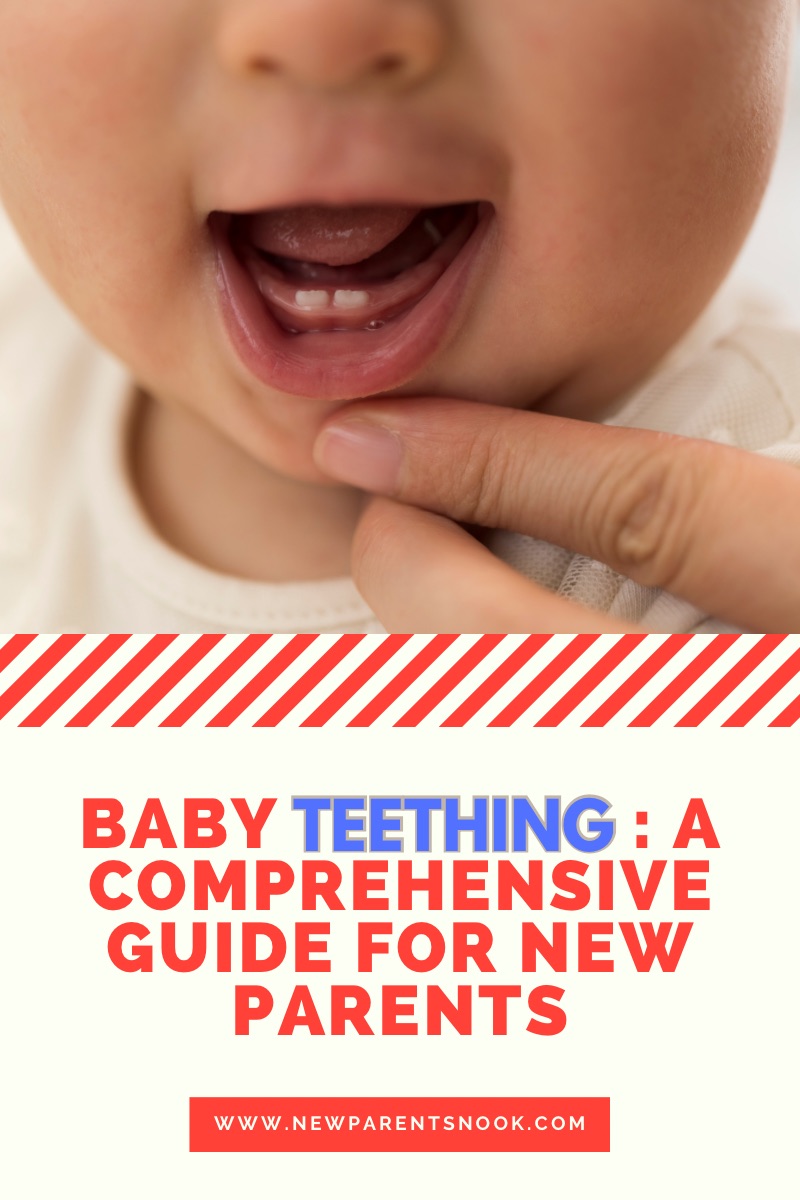Some links on our blog are affiliate links, meaning at no extra cost to you, we may earn a commission if you purchase through them. We participate in the Amazon Affiliate Program, and we recommend products we believe in. Your support helps us keep providing valuable content. Thank you!
Introduction to Baby Teething
Teething is a significant milestone in your baby’s development, but it often comes with its fair share of challenges.
Understanding the signs, symptoms, and effective soothing strategies can make this period more manageable for both you and your little one.
This comprehensive guide aims to provide you with all the essential information on baby teething, including expert recommendations on the best teething products to offer relief to your infant.
Recognizing the Signs of Teething
- Drooling: One of the first signs of teething is an increase in drooling. While it’s normal for babies to drool, you might notice more saliva than usual during this period.
- Chewing on Objects: Teething babies often seek to alleviate discomfort by biting on toys, fingers, or anything within reach.
- Irritability and Restlessness: The discomfort of new teeth coming in can make your baby more fussy and restless.
- Swollen, Tender Gums: You might notice your baby’s gums are swollen and tender just before a tooth comes through.
- Changes in Eating and Sleeping Patterns: Teething can disrupt your baby’s usual eating and sleeping routines, leading to more wakeful nights and fussiness during meals.
Teething Timeline: What to Expect
Teething typically begins around 6 months of age, but it’s not uncommon for the first tooth to appear as early as 3 months or as late as 12 months.
The lower front teeth (central incisors) usually come in first, followed by the upper front teeth.
Most children will have their full set of primary teeth by the age of 3.
Soothing Your Teething Baby
- Teething Rings and Toys: Look for phthalate-free, BPA-free, and non-toxic teething rings that can be cooled in the refrigerator. The cold can help soothe your baby’s gums.
- Gentle Gum Massage: Using a clean finger, gently massage your baby’s tender gums to provide relief.
- Cold Foods: For babies already on solids, cold foods like yogurt, pureed fruits, or chilled cucumber can offer some relief.
- Pain Relief: If your baby is particularly uncomfortable, consult your pediatrician about using over-the-counter pain relief medications specifically designed for infants.
Recommended Teething Products
- Silicone Teething Rings: Soft, flexible, and easy for little hands to hold.
- Natural Wood Teethers: A safe and eco-friendly option, ideal for babies who prefer a harder surface to chew on.
- Teething Wipes: Designed to clean your baby’s gums while providing a soothing, cooling effect.
- Teething Gels: Consult with your pediatrician before using any gels, as some contain ingredients that may not be recommended for infants.
Buying Options
Here’s a list featuring popular and highly rated teething products:
1. Teething Rings and Teethers
- Comotomo Silicone Baby Teether: Designed to mimic baby fingers, it’s easy for little hands to hold and chew on.
- Sophie La Girafe: A classic, made from natural rubber and food-grade paint, offering a soft texture ideal for soothing baby’s sore gums.
- Nuby Ice Gel Teether Keys: Filled with nontoxic gel that cools in the fridge, providing cool, soothing relief.
2. Teething Toys
- Munchkin Fresh Food Feeder: Allows babies to gnaw on cold fruits or vegetables safely, providing relief and a snack at the same time.
- The First Years Massaging Action Teether: This teether vibrates when baby bites down, providing a different type of soothing sensation.
3. Teething Jewelry
- Bumkins Silicone Chewtensils: Safe for babies to handle and chew on, these utensils are made from soft silicone that’s easy on the gums.
- Wear Tough Silicone Teething Necklace: Offers a stylish solution for moms and soothing relief for babies, made with 100% food-grade silicone.
4. Teething Gels and Remedies
- Hyland’s Baby Oral Pain Relief Tablets: Homeopathic tablets that dissolve instantly, meant to relieve pain, swelling, and irritability.
- Punkin Butt Teething Oil: An all-natural solution containing chamomile, clove, and peppermint, designed to soothe baby’s sore gums when massaged in gently.
- Camilia Teething Relief: Contains chamomile and other natural ingredients intended to relieve teething discomfort without numbing or affecting your baby’s gag reflex.
5. Teething Biscuits and Foods
- Happy Baby Organic Teethers: Gentle teething wafers made with organic ingredients, easy for little hands to grab and munch on.
- Gerber Organic Fruit and Veggie Bar: A solid option for older babies, these bars can help soothe teething pain while providing a nutritious snack.
Safety Tips
- Supervision: Always supervise your baby when they are using teething products to ensure safety.
- Inspection: Check teethers and toys regularly for signs of wear and tear, replacing them as needed to prevent choking hazards.
- Consultation: Before using new products or remedies, especially those ingested or applied to the gums, consulting with a pediatrician is advisable.
These products are popular among parents for their effectiveness in providing relief from teething discomfort.
However, it’s important to remember that every baby reacts differently, and what works for one may not work for another.
Always consider your baby’s specific needs and preferences, and when in doubt, consult with your healthcare provider for personalized advice.
In summary
Teething is a normal part of your baby’s development, but it can be a trying time for both of you.
By recognizing the signs of teething and employing effective soothing techniques, you can help your baby through this phase with minimal discomfort.
Every baby is different, so what works for one child might not work for another. Don’t hesitate to try different strategies to find what best soothes your teething baby.
Always consult with your pediatrician before introducing any new products or medications to your baby’s routine. With patience and the right tools, you and your baby will navigate the teething phase successfully.







